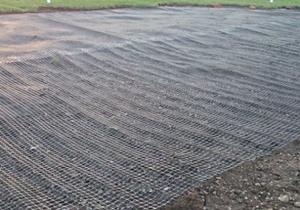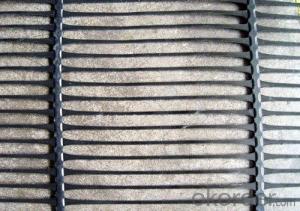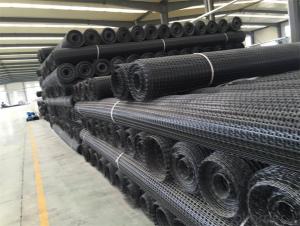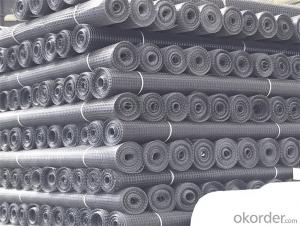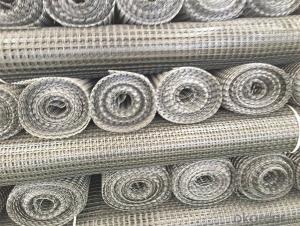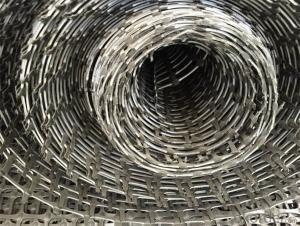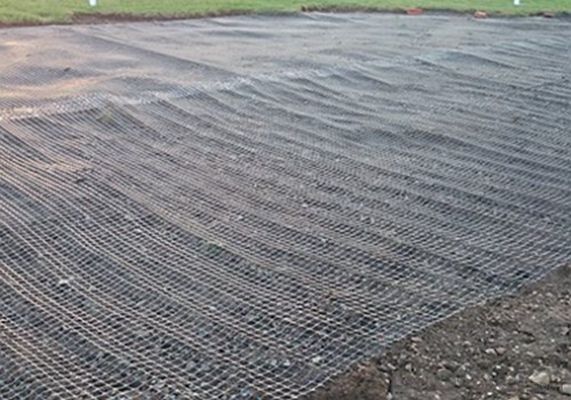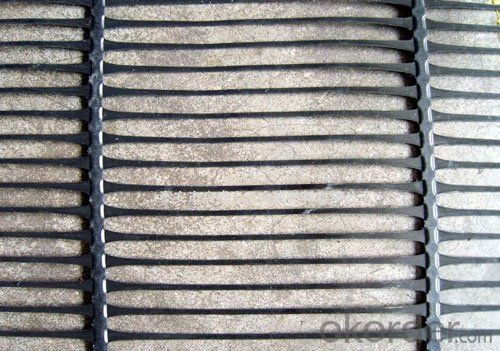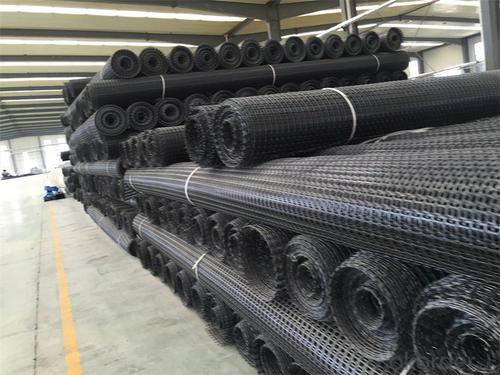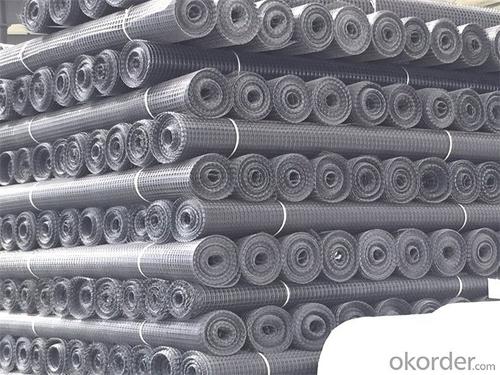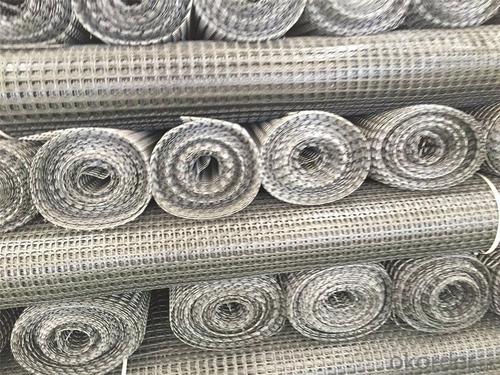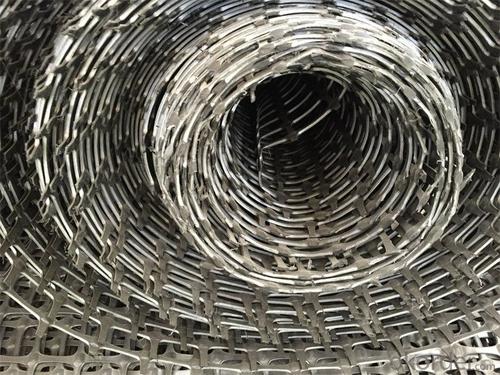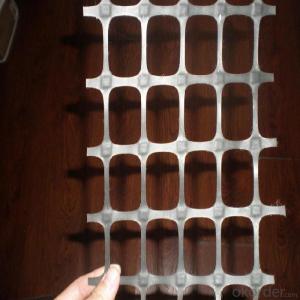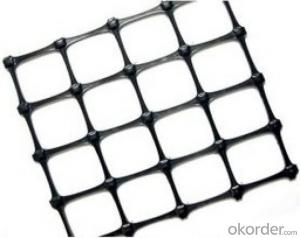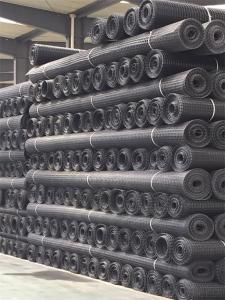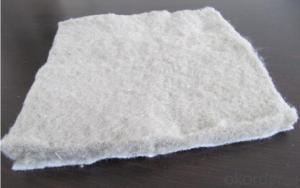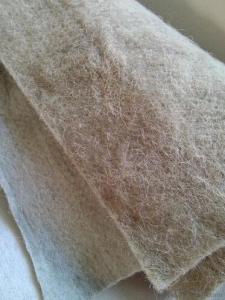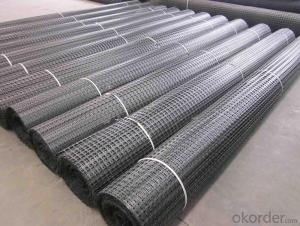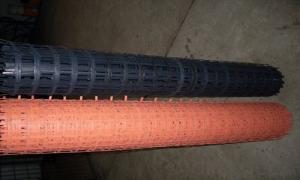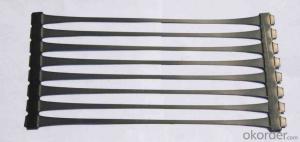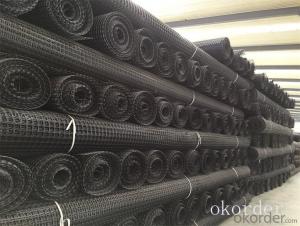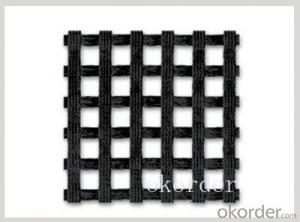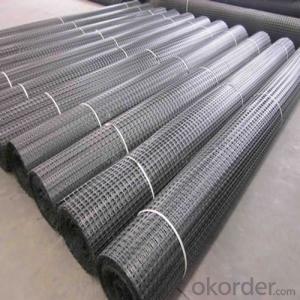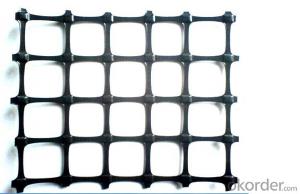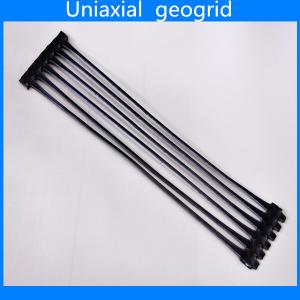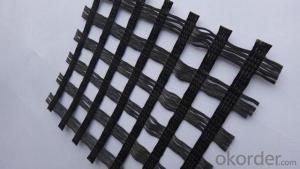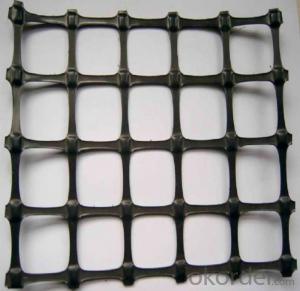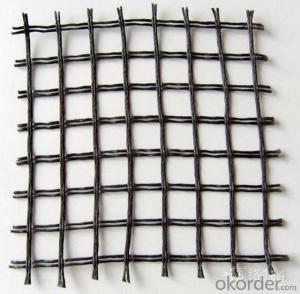Extensible Reinforcement Geogrids for Civil Engineering
- Loading Port:
- China main port
- Payment Terms:
- TT OR LC
- Min Order Qty:
- 1000 m²
- Supply Capability:
- 10000000 m²/month
OKorder Service Pledge
OKorder Financial Service
You Might Also Like
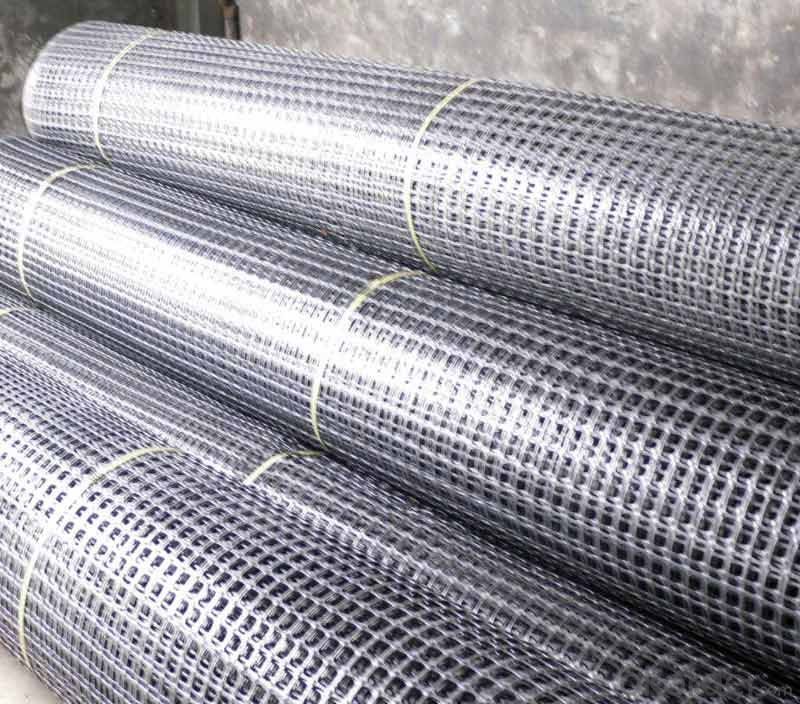
Product Introduction
Type:
Geogrids
Place of Origin:
Jiangsu, China (Mainland)
Brand Name:
Lonrace
Model Number:
geogrid
Material:
Polyester
Color:
White Black Gray Etc
Tensile strength:
25Kn/m--300Kn/m
Length:
50-100m
Certification:
CE /ISO9001
Coating:
PVC
The outlook of the biaxial geogrid is net work structure like a square. It uses polyester as its raw material and is made of high molecular polymer through extrusion, formed and punched before longitudinally and laterally stretched. This kind of material has a high tensile longitudinally and horizontally, which can be used to reinforce the basement.
Our Service
Quality assurance
1.On a regular basis or as per your request,we entrust national testing agencies to conduct quality inspections
2. Strictly in accordance with the ISO9001-2008 international quality system standard,we monitor and manage the whole process throughout production,quality testing,and measurement to ensure product quality
3. For quality-related construction delay or substandard construction(except for damage or losses due to customer’s responsibility or irresistible natural disasters),we have refunding,replacement,and repair services.We will respond to customers’ feedbacks on quality issues within 24 hours.
Packaging & Shipping
Packing: PLASTIC FILM INSIDE, AND WOVEN BAG OUTSIDE
Shipping: About 15 days after receipt the deposit
FAQ:
Q: What kind of payments does jenor support?
A: T/T, L/C, Cash are accepted.
Q: Do you charge for the samples?
A: Accordeing to our company policy, the samples are free, we only charge the freight fee. And we will return the freight fee during the next order.
Q: Can you produce according to customers' design?
A: Sure, we are professional manufacturer, OEM and ODM are both welcome.
Q: Do you have other products?
A: Yes, please check the pictures:
- Q: How do geogrids improve the stability of slopes?
- Geogrids improve the stability of slopes by providing reinforcement to the soil or rock materials. They are installed within the slope to distribute the applied load over a larger area, reducing stress concentrations. This reinforcement helps to prevent soil or rock movement, enhancing slope stability and reducing the risk of slope failure.
- Q: Can geogrids be used in reinforcement of geosynthetic clay liners?
- Yes, geogrids can be used in the reinforcement of geosynthetic clay liners (GCLs). Geogrids are often used as a reinforcement material to enhance the tensile strength and stability of the GCLs, thereby improving their performance in applications such as slope stabilization, landfill liners, and erosion control. The geogrids are typically placed between layers of GCLs to provide additional support and prevent potential failure modes, such as shear sliding or lateral spreading.
- Q: Are geogrids suitable for use in soft soils?
- Yes, geogrids are suitable for use in soft soils. Geogrids provide reinforcement to the soil, improving its stability and load-bearing capacity. They are particularly effective in soft soils as they distribute the load more evenly, reducing the risk of settlement and soil movement. Additionally, geogrids can help prevent lateral spreading and improve the overall performance of structures built on soft soils.
- Q: How do geogrids improve the performance of geosynthetic-reinforced embankments?
- Geogrids improve the performance of geosynthetic-reinforced embankments by providing reinforcement and stability to the soil. They enhance the load-bearing capacity of the embankment, prevent soil erosion, and distribute the applied load more evenly. Additionally, geogrids reduce settlement and increase the overall lifespan of the embankment, making it more durable and reliable.
- Q: What are the different installation techniques for geogrids?
- There are several different installation techniques for geogrids, including direct placement, overlay, and interlocking. Direct placement involves laying the geogrid directly on the prepared subgrade and then covering it with the desired fill material. Overlay technique involves placing the geogrid on top of an existing surface, such as an old asphalt pavement, and then adding a new layer of fill material. Interlocking technique involves connecting multiple geogrid panels together to form a continuous reinforcement layer before covering it with fill material. These installation techniques can vary depending on the specific project requirements and the type of geogrid being used.
- Q: What is the typical geogrid roll length for specific applications?
- The typical geogrid roll length for specific applications varies depending on the project requirements and the geogrid manufacturer. However, common roll lengths range from 50 to 500 feet, with longer rolls typically used for larger-scale projects such as road construction or soil stabilization.
- Q: How do geogrids improve the load distribution in paved surfaces?
- Geogrids improve the load distribution in paved surfaces by providing reinforcement and stabilization to the base layers of the pavement. They distribute the load across a larger area, reducing the stress on the pavement and preventing cracks, rutting, and other forms of pavement distress.
- Q: Water conservancy projects, the construction of the geogrid used in the quota which is not, how should the set of fixed price calculation of geogrid?
- The measurement of municipal geogrid shall not be included in the overlap area
- Q: What are the typical applications of geogrids?
- Geogrids are commonly used in civil engineering and construction projects for various applications such as soil stabilization, reinforcement of retaining walls, slope stabilization, pavement reinforcement, and erosion control. These grids provide strength and stability to soils, reducing the chances of soil movement and improving the overall stability and longevity of the structure.
- Q: What are the advantages of using geogrids in flexible pavements?
- There are several advantages of using geogrids in flexible pavements. Firstly, geogrids provide increased pavement strength and stability by distributing stress and reinforcing the pavement layers. This helps to prevent cracking and rutting, especially in areas with heavy traffic loads. Secondly, geogrids improve the load-bearing capacity of the pavement, allowing for the use of thinner pavement layers. This reduces construction costs and materials, making it a cost-effective solution. Additionally, geogrids help to control and reduce pavement deformation caused by settlement, expansion, and contraction. This leads to longer pavement lifespan and reduced maintenance requirements. Lastly, geogrids enhance the overall resilience and durability of the pavement, making it more resistant to environmental factors such as temperature variations, moisture, and freeze-thaw cycles. Overall, the use of geogrids in flexible pavements offers numerous benefits in terms of increased strength, improved load-bearing capacity, reduced deformation, and enhanced durability, making it a preferred choice for pavement construction.
Send your message to us
Extensible Reinforcement Geogrids for Civil Engineering
- Loading Port:
- China main port
- Payment Terms:
- TT OR LC
- Min Order Qty:
- 1000 m²
- Supply Capability:
- 10000000 m²/month
OKorder Service Pledge
OKorder Financial Service
Similar products
Hot products
Hot Searches
Related keywords
